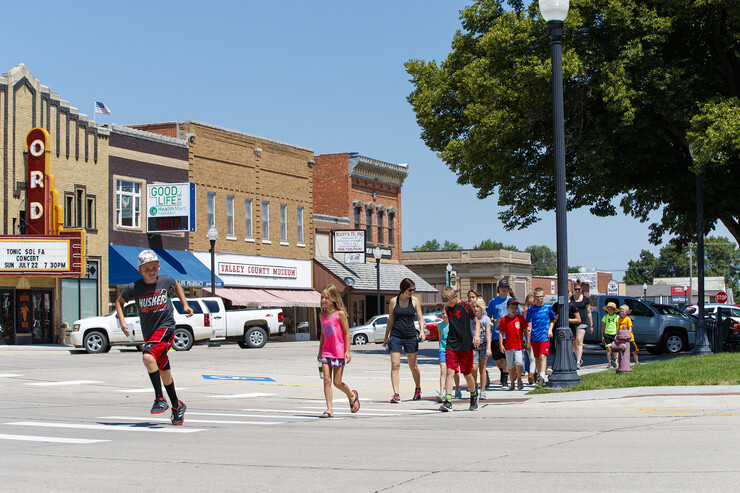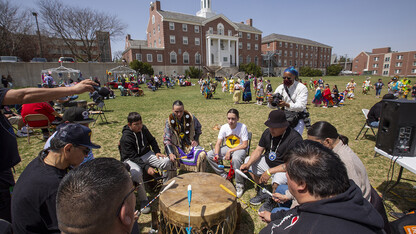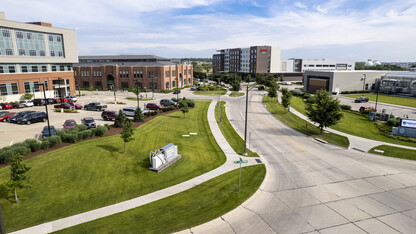· 4 min read
Poll shows optimism on the rise in rural Nebraska

Rural Nebraskans are more optimistic about their current and future situation than they have been in the history of the Nebraska Rural Poll, according to 2019 results.
Despite some of the challenges faced by rural Nebraska this year, 56% of respondents to the Rural Poll — the largest annual poll of rural Nebraskans’ perceptions on quality of life and policy issues — believe they are better off than they were five years ago, up from 52% last year. This is the highest proportion across all 24 years of the study. Rural Nebraskans’ optimism about their current situation has been increasing the past six years, as the gap has widened between the proportions saying they are better off vs. worse off than they were five years ago.
This optimism was also reflected in their outlook on the future, with 52% believing they’ll be better off in 10 years. This was an increase from 49% last year. The gap between those believing they will be better off vs. worse off 10 years from now has gradually widened since 2013. The poll was conducted in the spring, right after Nebraska’s widespread and historic flooding.
“With the unprecedented disasters we have seen this year, the results are surprising but not necessarily out of the ordinary,” said Jason Weigle, associate extension educator with Nebraska Extension. “Collective recovery from disasters can create strong feelings of place and pride, as showcased by the ‘Nebraska Strong’ campaign. It remains to be seen whether this uptick in optimism continues as recovery progresses over the next five to 10 years and the agricultural economy continues to languish.”
Rural Nebraskans surveyed have higher levels of satisfaction with many financial items compared to last year. Satisfaction with job opportunities increased from 41% last year to 49% this year, job security increased from 68% to 75%, and satisfaction with financial security during retirement increased from 42% to 48%. Many of these percentages are the highest seen in the past 20 years.
Poll respondents also have positive views of their community. Most rural Nebraskans surveyed rate their community as friendly, trusting and supportive and have a positive attachment to it. Most also say it would be difficult to leave their community.
Despite the overall optimism across the state, Panhandle residents were less positive about both their community and well-being compared to residents from other regions, similar to last year’s findings. Four in 10 Panhandle residents surveyed think they will be better off 10 years from now, compared to 58% of residents in the northeast region. Moreover, 24% expect to be worse off 10 years from now. When assessing their current situation, only 38% think they are better off than they were five years ago, and 23% believe they are worse off. Their pessimism continues when asked about their community: 37% of Panhandle residents say their community has changed for the worse during the past year, and 29% think their community will be a worse place to live 10 years from now.
“Over the last three Rural Polls, the Panhandle has shown more pessimism than other regions of the state,” said Cheryl Burkhart-Kriesel, extension professor at the Panhandle Research and Extension Center in Scottsbluff. “We’re not sure why this is the case, as many of the social and economic variables are similar. Additionally, when we look at county- and community-level data, we see pockets of optimism among the pessimism — so it’s not consistent across the entire region.”
Burkhart-Kriesel said the loss of Cabela’s, a significant economic driver across the Panhandle, may be one of the key reasons for the pessimism seen in the poll results, but more analysis is needed.
Residents were also asked about community goals this year. According to the poll, younger people are more likely to have goals for their community, know how to reach those goals and be actively pursuing them.
This year’s Rural Poll was sent to 6,260 households in 86 Nebraska counties in March and April. Responses were received through June 10. Results are based on 1,776 responses, a response rate of 28%. The margin of error is plus-or-minus 2%. View complete results.
The University of Nebraska–Lincoln’s Department of Agricultural Economics conducts the poll with funding from Nebraska Extension and the Nebraska Rural Futures Institute.








